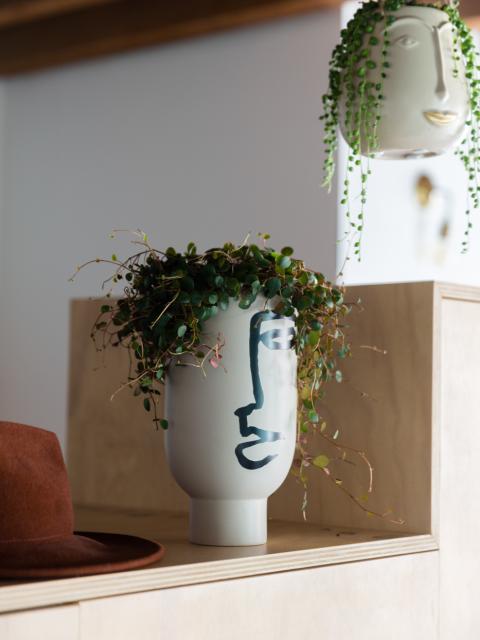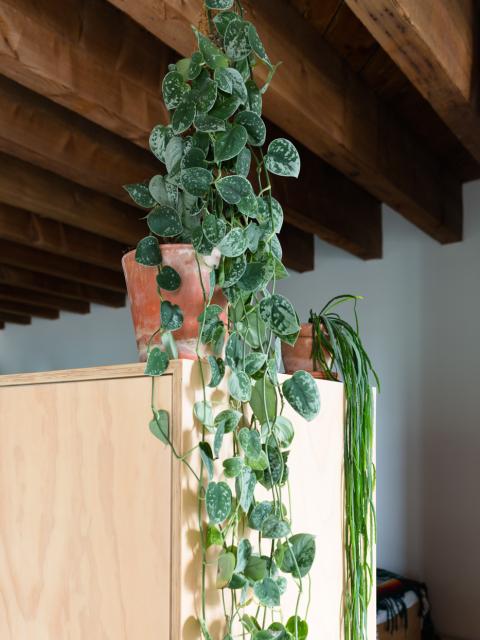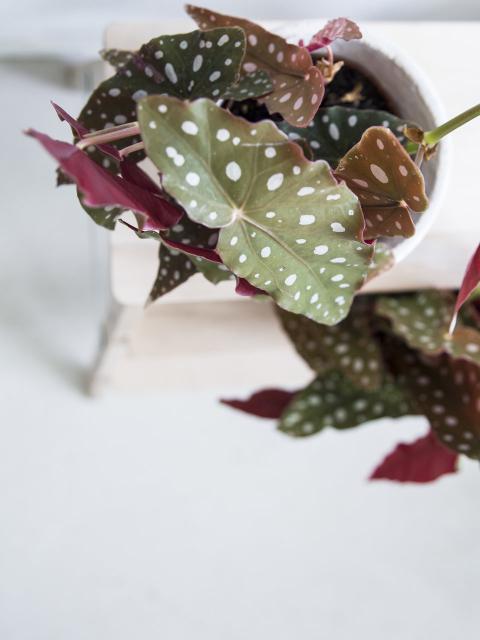Colours and shapes
Twisting stems, bizarrely shaped flowers: Ceropegia woodii gives the impression that you’re looking at an alien creature. The stems are wire-thin, the heart-shaped leaves hang off them like charms, and the flowers are reminiscent of an unfolded Oriental lantern, hence its nickname, Chinese lantern plant. Flowers aside, it’s still the foliage in particular that makes this hanging plant so distinctive. It has fantastic grey and green patterns with exciting splashes and watery patterns that constantly look different depending on how the light falls on them.
Symbolism
The name comes from 'keros' (wax) and 'pege' (spring): Carl Linnaeus, who named the plant, thought that it resembled 'a fountain of wax'. The plant has no symbolic meaning, although the heart-shaped leaves are often viewed as a sign of love.
Origin
Ceropegia is native to South Africa, Swaziland and Zimbabwe. It's a hanging succulent that grows from a tuber and is officially called Ceropegia woodii. The plant was discovered in 1881 by John Medley Wood, who saw the plant hanging from rocks in Natal. In the wild the vines can reach a length of four metres, and the flowers serve as a trap for the flies that provide pollination. Indoors the length is confined to around a metre.














